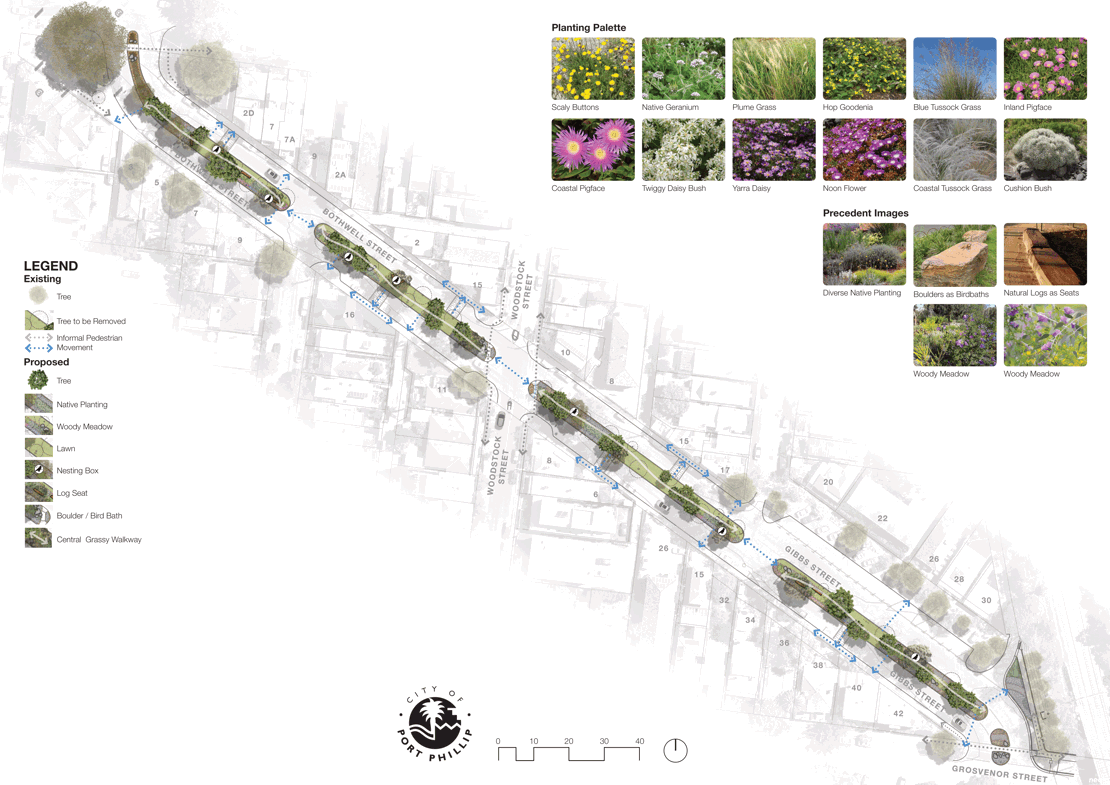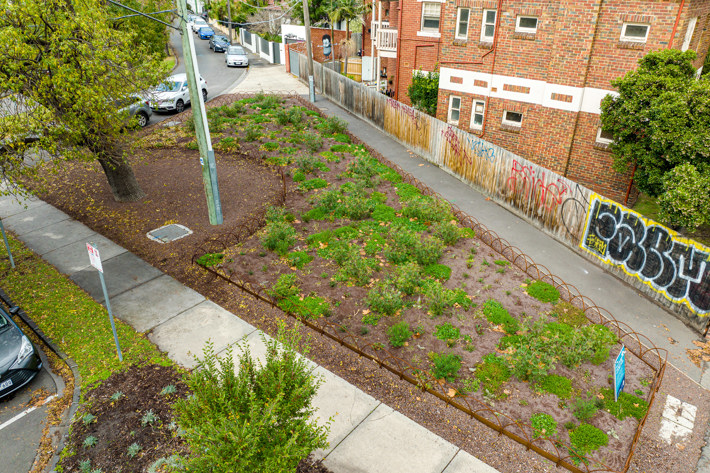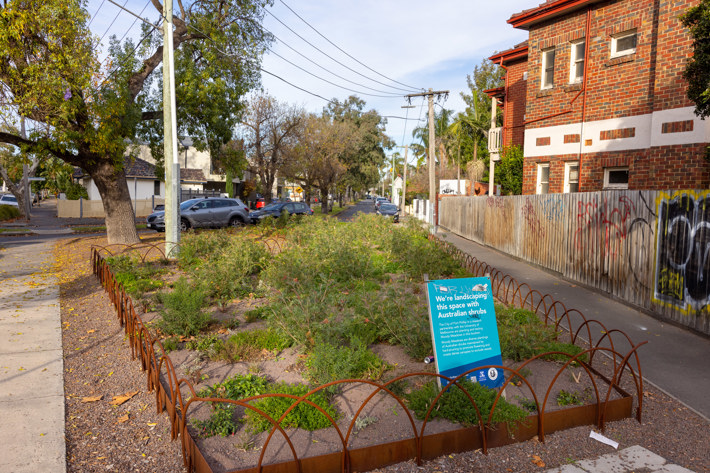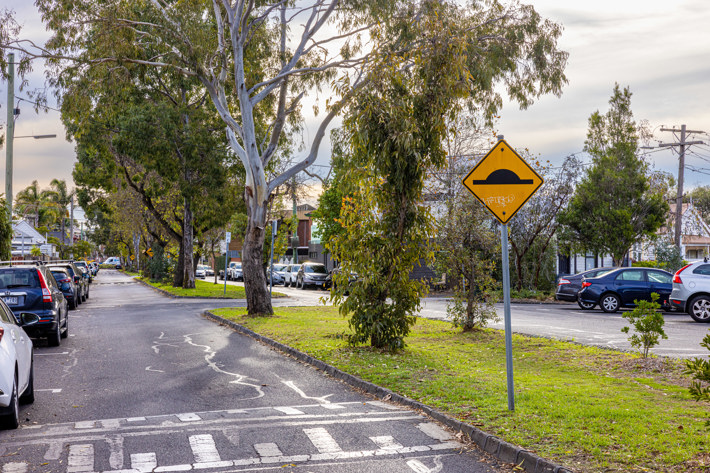Bothwell Street BioLink

Location
Cost
Why are we doing this?
The Bothwell Street median strip was dominated by introduced weedy Fraxinus angustifolia subspecies angustifolia/ Desert Ash (a weed species) and grass.
The biolink is a part of our Greening Port Phillip Strategy that envisions City of Port Phillip as having a “healthy and diverse urban forest that uses innovative greening solutions to enhance the community’s daily experience, ensuring environmental, economic, cultural and social sustainability for future generations.”
We transformed the plant life in this area in line with this vision.
Illustrative Plan.
The impact
The project involved:
- removing weedy trees and trees in poor health with low life expectancy
- planting native flowering eucalypts and bottlebrushes
- retaining some large, healthy Desert Ash trees for shade / canopy coverage while the new plantings establish.
The grass monoculture will be interrupted by two different styles of biodiversity planting - “woody meadows” planted with low maintenance native shrubs, designed in collaboration with the University of Melbourne, and mulched garden beds planted with local wildflowers indigenous to our City.
The plantings support urban biodiversity, including local insects and pollinators. Over time, these plants will encourage more native fauna, such as small insectivorous native birds, to reside in the area. Nest boxes and habitat features like logs and boulders will also be introduced to the space to provide additional habitat.
In response to community feedback, a grass path was maintained down the median. A traffic engineer was engaged to identify the safest entry and exit points to the median. The path leads to those points on each section of the median.
Notifications regarding the project were sent to nearby residents in June 2022.
Construction took place in August and September 2022.
Further information regarding the species being introduced to the median can be found here: Bothwell Street BioLink Species List (PDF, 117 KB)
More information regarding the University of Melbourne Woody Meadow project can be found here: https://woodymeadow.unimelb.edu.au
Tree removal
The project involved the removal of some declining and dead trees along the median, as well as some Desert Ash (a weed species).
The majority of the trees removed were poor quality or in the advanced stages of decline. A small number of trees were moderate quality trees, though with a limited useful life expectancy. Those trees were removed to increase the bio-diversity benefits the project will bring. A number of high value trees (including Desert Ash) were retained. These provide aesthetic and environmental benefits while the new generation of trees establish.
The trees were replaced with native trees, including locally indigenous species, to enhance local biodiversity.
The trees removed can be seen on the following maps:
Tawny Frogmouths
Some residents expressed concern about the potential impact of the project on Tawny Frogmouths, which have been observed in the area.
In relation to nesting Tawny Frogmouths, or any fauna protected by the Wildlife Act 1975 or the Native Flora and Fauna Guarantee Act 1988, tree removal does not occur if nesting sites are observed, or if any form of native fauna is otherwise inhabiting the tree. City of Port Phillip’s contractor waited till an affected tree was no longer inhabited or engaged a suitably qualified ecologist to relocate.
As a number of the larger trees along Bothwell Street were not cut down, City of Port Phillip believed that sufficient nesting opportunities remained in Bothwell Street and nearby.
The Biolink has been designed to introduce an understorey layer of native indigenous plants selected for their biodiversity value. The indigenous garden beds were designed in consultation with Westgate Biodiversity: Bili Nursery to include plants known to attract local pollinators and other insects. We anticipate that over time these plants will plants will attract the kinds of food sources (insects and other invertebrates) which sustain local avian and reptile fauna. The Biolink is also introducing habitat features like logs, boulders and ephemeral water sources (water wells carved into mudstone) to further support local wildlife. 9 nesting boxes will also be included along the median.
Objectives
The Bothwell St BioLink project aims to create a new biodiverse planting down the Bothwell St median which will support local flora and fauna and improve pedestrian amenity and enjoyment of this valuable pocket of public open space. A clear path down the median remains, with safe entry and exit points to and from neighbouring streets and footpaths.
If you have any questions regarding this project, please email openspace@portphillip.vic.gov.au.

Woody Meadow Trial garden (corner Nightingale St and Chapel St)

Woody Meadow Trial garden (corner Nightingale St and Chapel St)

Bothwell St median